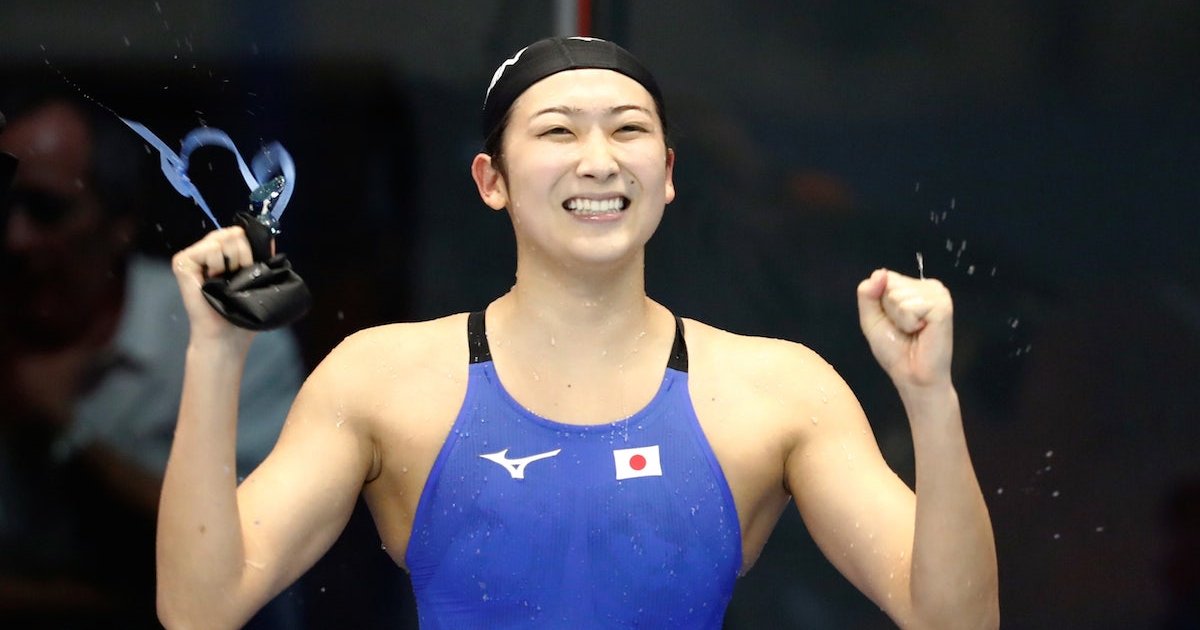Rikako Ikei's Inspiring Story
- Rikako Ikei, a 21-year-old swimmer from Japan, was initially going to compete in the 2020 Tokyo Olympics, but was diagnosed with leukemia in 2019.
- She went through treatment and now is in remission. Due to the COVID-19 pandemic, she will be able to compete in the Tokyo Olympics (which kick off next week).
- Leukemia is a cancer of the early cells in bone marrow that grow into white blood cells. This keeps your body from helping fight infections.
Related: Do What You Love Even if Cancer Gets in the Way of Your Dreams
Read MoreLeukemia: The Breakdown
Leukemia is a cancer of the early cells in bone marrow that grow into white blood cells. Problems arise when your body starts making too many of these cells. Because the new cells are abnormal and don't work like they should, they're of little help in protecting you against infections.
There are four main subtypes of leukemia, which are broken down based on the maturity of the white blood cells they affect, and the type of cells they start from. These subtypes include: Acute myeloid leukemia (AML), Chronic myeloid leukemia (CML), Acute lymphocytic leukemia (ALL), and Chronic lymphocytic leukemia (CLL).
Related: Blood Cancer is Different From Other CancersSome Treatments Are, Too
Acute leukemia happens when the cancer cells are immature and can't do their job. Chronic leukemia is when most of the abnormal cells are mature, but they still don't work as well as healthy white blood cells. Myeloid leukemias start in myeloid cells, the type of cells that become white blood cells, red blood cells, or platelets. Lymphocytic leukemias start from the cells that produce lymphocytes.
The most common treatment plan for most blood cancers often is a stem cell transplant, but in certain cases of leukemia treatment isn’t always immediately necessary. Sometimes, your doctors can put you on active surveillance in order to keep an eye on the cancer and see whether it progresses.
Dr. Nicole Lamanna breaks down the different types of blood cancers
Working Towards Goals During Cancer
For many people facing cancer, focusing on goals and dreams they want to accomplish in the future can be a great way for them to push through treatment and keep fighting. This clearly was the case for Ikei, and it proves that mindset is a powerful tool during a cancer battle. In fact, there’s actually a term that experts use for this mindset called the “eye of the tiger” mentality. Experts say that a strong and positive mindset can help guide patients to more successful treatment outcomes, and also help them recover more easily.
"We call it 'eye of the tiger,’" Dr. Sid Ganguly, deputy director of hematologic malignancies and cellular therapeutics at the University of Kansas Medical Center, tells SurvivorNet in a previous interview. "You have to have the eye of the tiger to go through this grueling process that is necessary these days to get rid of these virulent and aggressive cancers."
Related: Stay Positive, It Matters
This 'eye of the tiger' mentality not only refers to someone's attitude; it also includes diet and exercise. By incorporating all three of these factors, it can help patients keep up their health. "A good positive mind increases our interleukins, our immune system," Dr. Ganguly says. "There have been many researches that already have proved that depression is associated with decreased immune system, increased chance of infection. Seasonal affective disorders during winter has been associated with increased respiratory illnesses as well."
Dr. Sid Ganguly explains the power behind mindset during a cancer battle
Learn more about SurvivorNet's rigorous medical review process.


